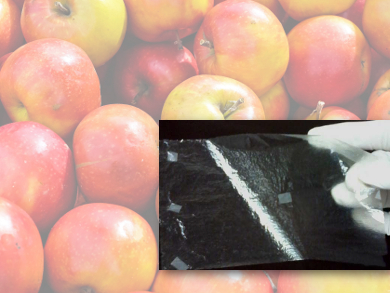Biopolymers, such as cellulose, chitosan, or pectin, can be turned into sustainable, biodegradable films. These materials can then be used as, e.g., food packaging, edible coatings, or wound dressings. Their production usually involves the same technologies used for traditional synthetic polymers, such as casting or extrusion.
Electrospraying (electrohydrodynamic atomization) is a method that can produce very small droplets of a polymer solution using an electric field. It is useful for the controlled generation of materials, however, it has not previously been used to produce biopolymer films from substances such as pectin.
Georgina Calderón-Domínguez, Escuela Nacional de Ciencias Biológicas (ENCB), Mexico City, Mexico, and colleagues have used electrospraying to produce pectin films. The team combined the pectin with glycerol as a plasticizer and dissolved it in distilled water. They electrosprayed the resulting solution onto a collector, using a voltage of 12.5 kV.
The produced pectin films were transparent and flexible and had a thickness of about 23.4 μm. The electrosprayed films required a lower pectin solution volume than the traditional casting method to produce films of the same area and thickness. They had more and smaller pores and a lower density (0.7 g/cm3) compared to the cast films (1.7 g/cm3), which lead to better water vapor permeability. According to the researchers, these properties could make the films suitable for applications such as wound dressings, tissue engineering, and drug release.
- Pectin-based films produced by electrospraying,
Victor A. Gaona-Sánchez, Georgina Calderón-Domínguez, Eduardo Morales-Sánchez, J. Jorge Chanona-Pérez, Israel Arzate-Vázquez, Eduardo Terrés-Rojas
J. Appl. Polym. Sci. 2016.
DOI: 10.1002/app.43779




